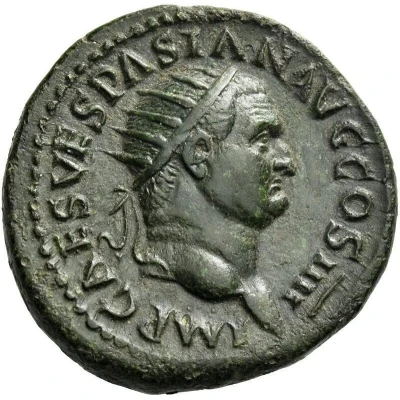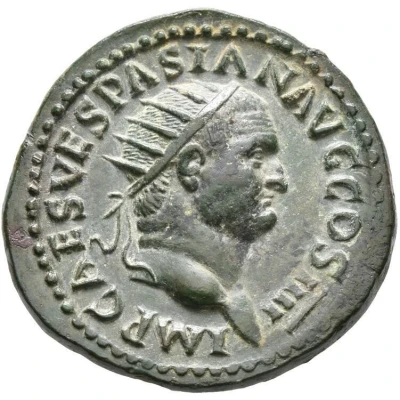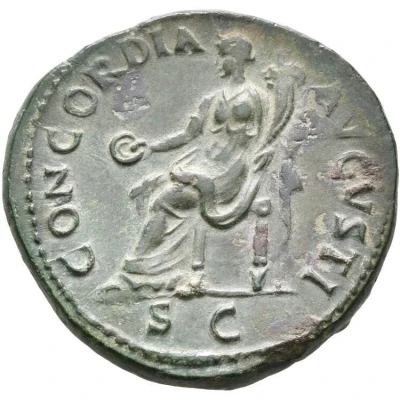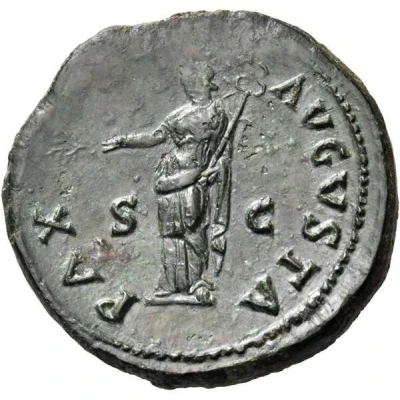


© Numismatica Ars Classica NAC AG
Dupondius - Vespasian FELICITAS PVBLICA S C; Felicitas
| Bronze | 13.1 g | 26 mm |
| Issuer | Rome › Roman Empire (27 BC - 395 AD) |
|---|---|
| Emperor | Vespasian (Titus Flavius Vespasianus) (69-79) |
| Type | Standard circulation coin |
| Years | 72-73 |
| Value | 1 Dupondius = ⅛ Denarius |
| Currency | Denarius, Reform of Augustus (27 BC – AD 215) |
| Composition | Bronze |
| Weight | 13.1 g |
| Diameter | 26 mm |
| Shape | Round (irregular) |
| Technique | Hammered |
| Demonetized | Yes |
| Updated | 2024-10-06 |
| Numista | N#249297 |
|---|---|
| Rarity index | 100% |
Reverse
Felicitas standing left, holding caduceus and cornucopiae.
Script: Latin
Lettering: FELICITAS PVBLICA S C
Translation:
Felicitas Publica. Senatus Consultum.
Good fortune of the public. Decree of the senate.
Comment
Mass varies: 12.88–13.4 g;Source: Online Coins of the Roman Empire (OCRE)
Interesting fact
The Dupondius coin featuring Vespasian and the inscription "FELICITAS PVBLICA S C" is interesting because it was minted during a time of significant economic and political change in the Roman Empire. The coin's design, which includes the image of a Roman goddess, reflects the imperial propaganda efforts of the time, which aimed to promote the idea of the Roman state as a source of prosperity and happiness for its citizens. Additionally, the use of bronze as the material for the coin suggests that the Roman Empire was experiencing economic difficulties during this period, as the value of the coin was lower than that of coins made from more valuable metals like gold or silver. Overall, this coin provides a unique insight into the political and economic climate of the Roman Empire during the 1st century AD.



